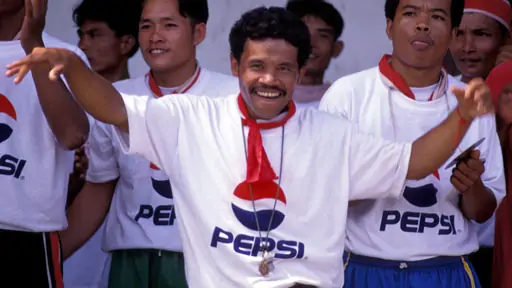Indigenous Calendar October, 2011: Victory and a Four-sided Rosetta Stone

The majority people in Cambodia today are the Khmer and the majority people in Laos are the Lao. While this is no historical accident, it is more than anything else a statement about international borders. Many Lao people live in Cambodia and vice versa.
One of my most fascinating linguistic adventures was the day I visited a remote Kavet village in northeastern Cambodia — very close to the Laotian border. The Kavet speak their own language but my (English-speaking) Cambodian guide had expected that someone in this village would speak his native language, Khmer — at least at a basic level. When we realized that nobody in the village spoke it we soon left, thinking that all hope of communication with the villagers was lost. We returned to the boat and my guide instructed the boatman to head further downstream to the next Kavet village. I don't know why the boatman chose to question this but he did and it emerged that he (fluent in Laotion and conversational in Khmer) spoke basic Kavet! We returned to the village and I spent an interesting few hours in conversations that went English-Khmer-Laotion-Kavet-Laotion-Khmer-English. If we'd stayed long enough in that village we could have collectively created a four-sided Rosetta Stone!
A few days later, when I crossed the border into southern Laos, I wasn't surprised to hear Khmer being spoken. Nor was I surprised that a cultural event was taking place of Khmer origin — a boat racing competition. Boat racing has long been a tradition of the Khmer people and there is no reason why they would have abandoned the tradition once the border between Laos and Cambodia was established.
I spent the whole morning observing and photographing the boat racing. It was one of those "bonus" moments when, during your traveling, you stumble across such a rare opportunity that you didn't know about in advance.
Later that day I was given an even more rare opportunity. A young man who was associated with the victorious team had noticed me and had intuitively perceived that I was at the event for reasons beyond passing tourism. He approached me and invited me to come to the victory celebrations later that afternoon. Of course, I didn't hesitate to accept his invitation.
When I arrived at the victorious team's camp the scene was one of bedlam. A crowd of men were singing, dancing and drinking like it was the last night of the world. The language barrier denied my confirmation but I got the impression that the underdog team had won the final boat race earlier in the day. Then I made my way to where the actual team members who had rowed that morning were celebrating. They had changed into what must have been their team uniform T-shirts. I remember thinking back to my experience a few days earlier in that Kavet village and how globalization had allowed me to have a conversation that would have been impossible just fifty years ago. This time I wondered whether the members of this celebrating team grasped the globalization on show through their celebrations.
The Khmer and the Kavet are featured in our documentary, Indigenous Peoples of Southeast Asia.
If you enjoyed reading this article, please consider supporting independent, advertising-free journalism by buying us a coffee to help us cover the cost of hosting our web site. Please click on the link or scan the QR code. Thanks!


